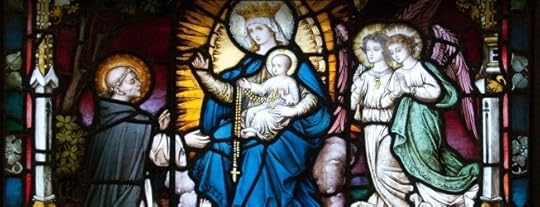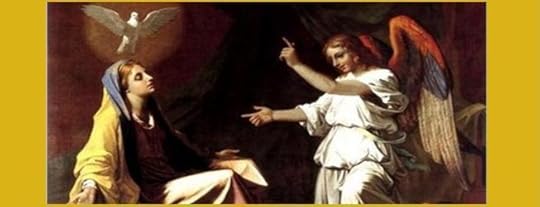Carl E. Olson's Blog, page 192
October 11, 2012
The Most Holy Rosary
The Most Holy Rosary | Paul Kokoski | Homiletic & Pastoral Review
Because the Immaculate Virgin was chosen to be the Mother of God, cooperating with him in the work of man’s salvation, she has a favor and power with her Son greater than any human or angelic creature … it is her greatest pleasure to grant help and comfort to those who seek her.
The month of October is traditionally dedicated to Our Blessed Mother under her glorious title, “Our Lady of the Rosary.”
The holy rosary, a devotional prayer of the Catholic Church, is both
mental and vocal, honoring the Blessed Virgin Mary. It consists of 15
decades of Aves (Hail Mary), each decade being preceded by a Pater (Our Father), and followed by a Gloria
(Glory be), all recited while fingering the rosary beads. A different
mystery is contemplated during the recital of each decade. They are the
15 joyful, sorrowful, and glorious mysteries of the life of Christ and
His Blessed Mother. Recently, Pope John Paul II added five new
mysteries: the mysteries of light, or “luminous” mysteries. The rosary
begins with the recitation of the Apostles’ Creed (on the crucifix), one
Our Father, and three Hail Marys.
From the earliest days, the Church asked its faithful to recite the
150 Psalms of David. However, because it was difficult in the days prior
to the invention of the printing press to procure a book of Psalms, the
Psalms were often substituted using 150 Hail Marys.
Gradually, under the guidance of the Holy Spirit and St. Dominic, The
rosary of the Virgin Mary, took its present classical form, and is now a
prayer beloved by countless saints. It is encouraged by the Magisterium. Pope John Paul II has called it his “favorite prayer.”
St. Dominic, who died in 1221, received from the Blessed Mother the
command to preach and to popularize this devotion in order to appease
the anger of God, while imploring the intercession of the Blessed Virgin
Mary for the good of souls, for conquest over evil, and for the
prosperity of Holy Mother Church. St. Dominic immediately used the
rosary as a warlike weapon to put the Albigensian heretics to flight,
confounding their audacity and mad impiety.
October 10, 2012
US Bishops Must Master the Sound Bite
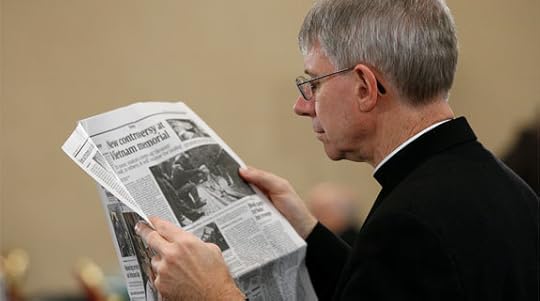
US Bishops Must Master the Sound Bite | David F. Pierre, Jr. | Catholic World Report
Going on the media offensive and strengthening public relations will protect children and educate the public.
Last August in
Omaha, Bishop Daniel Conlon of Joliet, Illinois delivered a speech entitled,
“Help for Bishops in Rebuilding Trust.” The talk was designed to encourage the
lay faithful in speaking up about all of the progress that the Catholic Church
has made in providing safe environments for children and protecting kids in
light of the abuse scandals.
“You may be in a
position to be pastoral assistants to bishops in binding up the Church’s wounds
and restoring trust. I hope God calls you to that task and equips you for it,” Bishop
Conlon said.
However, more
than halfway through his speech, in which he pointed out the urgent need for
lay people to spread the Church’s message, Bishop Conlon quipped that the
“credibility” of bishops was “shredded” when it came to the issue of child sex
abuse.
Uh-oh.
Media outlets
immediately jumped all over the opportunity to report that a Catholic bishop
had announced that the bishops’ credibility was “shredded.” The bishop’s remark
had all the traits of a terrific headline; “R. Daniel Conlon, Catholic Bishop,
Says Church’s Credibility On Sex Abuse Is ‘Shredded’” read the headline on David
Gibson’s report for Religion News Service.
Never mind that
the words were frequently taken out of their original context—Conlon’s larger
point was about empowering lay people to fulfill the Church’s role of reaching
out to victims and promoting a message of healing. The enemies of the Church
had all of the ammunition it needed, and the damage was done.
The importance of the sound bite
Conlon’s episode
serves as an invaluable lesson to the Church when it comes to making speeches,
issuing off-handed remarks, composing articles, and dealing with the media. We
live in a culture of the sound bite, and the enemies of the Church are ready to
seize on this.
In a sound-bite
culture, context and honesty are easily thrown aside. Bishops and spokespeople
need to understand that many in the media are always seeking out anything
negative with which to hammer the Catholic Church. Words must be chosen
extremely carefully. The Church’s enemies don’t give a rip about context or if
you “meant something else.”
Many enemies of
the Church have become masters of the sound bite. David Clohessy, the national director
of the anti-Catholic group SNAP (Survivors Network of those Abused by Priests)
continually rails against bishops who allegedly “ignore, conceal, and enable
heinous child sex crimes.” The words make a great
sound bite; they look good, and they catch people’s attention. Journalists love
this, and many could not care less what the actual facts are.
Catholic
officials and diocesan spokespeople need to utilize strong, concise, and
engaging sound bites. Such a strategy will not only fortify the Church’s
struggling public relations, but it will also educate the public about the
unrivaled advances it has taken to protect kids.
Continue reading at www.CatholicWorldReport.com.
40% off Diane Hanson's Pick of the Week*

40% off Diane Hanson's Pick of the Week*
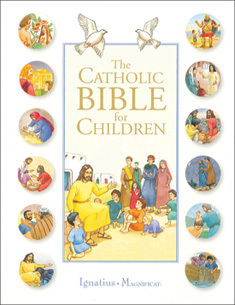 I’ve
I’vealways felt it is so important to begin introducing the Catholic faith
to our children at a very young age. In fact, the best time is before
they can crawl – when they’re a captive audience and can’t get away! But
it is equally important to have quality, faithful, Catholic materials
with beautiful, colorful artwork and age-appropriate, easy-to-understand
text.
That’s exactly what we have in The Catholic Bible for Children
from Ignatius/Magnificat. With colorful vivid illustrations and brief
descriptive text, the stories of the Bible from the creation of the
world to Jesus’ ascension into heaven and John’s vision of the Heavenly
Jerusalem as depicted in Revelation come to life. This is the children’s
Bible I give to each of my grandchildren now as a baptism, birthday,
First Communion or Christmas gift.
As the authors of this Bible encouraged: “Rediscover Jesus with your
children; let them come listen to him. Jesus loved to speak to children.
His words were meant for them, too.”
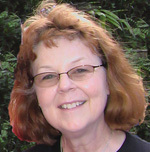 Diane Hanson is the Special Events Coordinator for Ignatius Press, she is also the co-author of No Price Too High,
Diane Hanson is the Special Events Coordinator for Ignatius Press, she is also the co-author of No Price Too High,the conversion story of former Pentecostal preacher and now Catholic
deacon, Alex Jones. Diane started working fulltime for Ignatius Press in
2008 and resides in Canton, Michigan with her husband and surrounded
within a 20-mile radius by her six children, five in-law children and
eight grandchildren. Grandchild number nine is due in December and ten
is due next May. In addition to enjoying much family time, Diane likes
to hike, bike, camp, read, write and dabble in photography.
*Employee
Pick of the Week program features savings of 40% off a book, movie, or
compact disc personally chosen and recommended by an Ignatius Press
employee. Each week, an Ignatius Press employee will select a favorite
book, movie, or other Ignatius Press product and write a few sentences
about why he or she thinks customers will enjoy the particular
selection. A short bio of the selecting employee will also be included,
giving customers a chance to learn a bit more about the people who are
Ignatius Press.
20% off new Books, Films and Music from Ignatius Press
These prices are available online only through Ignatius.com

20% off new Books, Films and Music!
Great new products are now available at 20% off! Included in these new releases is the latest album from Jackie Evancho, Songs from the Silver Screen. The young singing sensation from America’s Got Talent lends her voice to classic songs such as What a Wonderful World and more. An inspiring and courageous story, The Price to Pay
tells the story of Joseph Fadelle’s conversion from Islam to
Christianity. Teach your children about their faith using the new DVD
series featuring Brother Francis. Get these and other great new books
and films all at 20% off!
This Thursday, October 11, 2012 marks the beginning of the
Year of Faith as called for by Pope Benedict XVI. During this Year of
Faith, we as Catholics are called to deepen our knowledge and practice
of the faith. These outstanding items can help you and your friends to grow in faith.
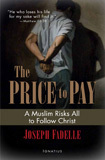 The Price To Pay
The Price To Pay
A Muslim Risks All to Follow Christ
Joseph Fadelle
The Price to Pay is the true story of Joseph Fadelle's
conversion to Christianity. He risks everything-family, friends, his
inheritance and home, and even his life-in order to follow Christ. In a
dramatic and personal narrative style, Fadelle reveals the horrible
persecution endured by Christians living in a violent and hostile Muslim
world. Also available as an e-book.
Regular price: $19.95, sale price: $15.96
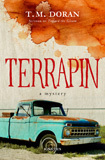 Terrapin
Terrapin
A Mystery
T. M. Doran
A murder mystery and a coming of age story, both with many twists and turns, Terrapin
is about man's potential for doing either good or evil, his tendency to
do the latter, and his response to the consequences of his actions. Also available as an e-book.
Regular price: $24.95, sale price: $19.96
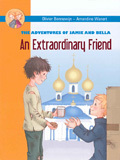 An Extraordinary Friend
An Extraordinary Friend
Olivier Bonnewijn
This is the first book in The Adventures of Jamie and Bella,
a popular series of stories that can be read independently of the
others but that contain the exciting and enriching experiences of Jamie
and his sister Bella. At the end of each book, is a set of
faith-deepening questions and answers that children and parents can
discuss together.
Regular price: $9.99, sale price: $7.99
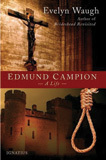 Edmund Campion
Edmund Campion
A Life
Evelyn Waugh
Evelyn Waugh presented his biography of St. Edmund Campion, the
Elizabethan poet, scholar and gentleman who became the haunted, trapped
and murdered priest as "a simple, perfectly true story of heroism and
holiness." But it is written with a novelist's eye for the telling
incident and with all the elegance and feeling of a master of English
prose.
Regular price: $16.95, sale price: $13.56
 Splendors of the Rosary
Splendors of the Rosary
A beautifully designed volume that celebrates the 20 mysteries of
the Rosary with glorious art, meditations, scripture and prayers.
Gorgeous reproductions of classic paintings and illuminations throughout
the book help the reader to visualize each mystery and aid in
contemplation. The lavish art and the beautiful spiritual readings on
the mysteries will dispose the reader to receive many graces of faith
that pour forth from the Rosary prayer.
Regular price: $19.95, sale price: $15.96
Films
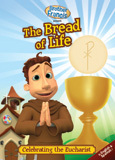 Brother Francis DVD series
Brother Francis DVD series
The Rosary
Join Brother Francis in this entertaining and guidance-filled
presentation that will inspire children to deepen their faith by praying
the Rosary!
Regular price: $12.99, sale price: $10.39
Let's Pray!
Join Brother Francis and his friends as they inspire children in
their Catholic faith. This entertaining instructive series features
stories, visual examples, music, and practical application!
Regular price: $12.99, sale price: $10.39
Forgiven!
In this lively presentation, Brother Francis reminds old and young
alike about the great gift of God's forgiveness through the Sacrament
of Reconciliation!
Regular price: $12.99, sale price: $10.39
The Bread of Life
Join Brother Francis in the delightfully inspirational and
instructive presentation that teaches children all about the sacrament
of the Eucharist!
Regular price: $12.99, sale price: $10.39
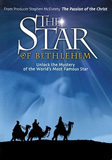 The Star of Bethlehem
The Star of Bethlehem
This film presents a magnificent display of the evidence to
support the claims made for the Star of Bethlehem, done in a way that
engages even the most hostile viewer in an entertaining and easily
understandable format. Presenter Rick Larson walks you through Biblical
and historical clues revealing the incredible significance of this
celestial event as well as the vastness of God's creativity.
Regular price: $12.95, sale price: $10.36
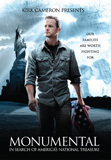 Monumental
Monumental
Monumental is the story of America's beginnings.
Presented, produced, and starring Kirk Cameron, the 90-minute true story
follows this father of six across Europe and the US as he seeks to
discover America's true "national treasure" - the people, places, and
principles that made America the freest, most prosperous, and generous
nation the world has ever known.
Regular price: $19.95, sale price: $15.96
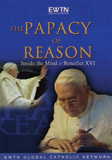 The Papacy of Reason
The Papacy of Reason
Inside the Mind of Pope Benedict XVI
This insightful overview of his life and the principal teaching
themes of his Pontificate reveals his unique approach for guiding the
people of God in truth, hope and love. In addition to in-depth footage
on the Pope himself, it includes important interviews with key Church
leaders, Vatican experts and prominent Catholic journalists who cover
the Vatican.
Regular price: $19.95, sale price: $15.96
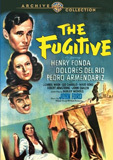 The Fugitive
The Fugitive
Based on Graham Greene’s novel The Power and the Glory,
the story follows a priest (Henry Fonda) in Latin America pursued by a
ruthless police lieutenant carrying out the dictates of an oppressive,
anti-clerical government. There’s another fugitive as well: an American
killer on the run—and the paths of the two hunted men cross with fateful
consequences.
Regular price: $29.95, sale price: $23.96
Agenda
Grinding America Down
Though the word communism isn't used anymore, this film will show
the ideas behind it are alive and well. Join Bowers for a fascinating
look at the people and groups that have successfully targeted America's
morality, religious beliefs and freedom in their effort to grind America
down. It's a well documented AGENDA.
Regular price: $19.95, sale price: $15.96
Kabul 24
In the summer of 2001, eight aid workers in Kabul, Afghanistan,
were arrested by the Taliban and accused of spreading Christianity. Six
years in the making, Kabul 24 takes you around the globe to
reveal the personal stories behind the eight Western prisoners and their
sixteen Afghan coworkers. Follow their amazing saga as they endure
harrowing captivity, the bombing of Kabul, a sham Supreme Court trial,
and a rescue as suspense-filled and miraculous as the story itself.
Regular price: $16.95, sale price: $13.56
Music
 Songs from the Silver Screen
Songs from the Silver Screen
Jackie Evancho
Young singing sensation Jackie Evancho applies her brilliant voice
and extraordinary artistry to an entirely new set of classics. Jackie
is joined by famous artists on some of the songs including The Canadian
Tenors, trumpeter Chris Botti, and violinist Joshua Bell. Movie songs on
this album include Some Enchanted Evening, What a Wonderful World,
My Heart Will Go On, Reflection, Come What May, When I Fall in Love, The
Music of the Night, and five more.
Regular price: $14.95, sale price: $11.96
Catholic Word Report
Music to Die For
by Benjamin Wiker
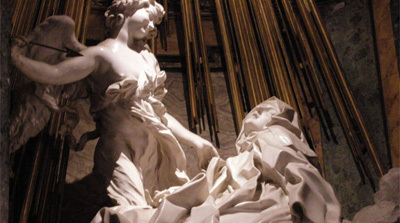
The Mass cries out for music that enmeshes us in the great drama of salvation, even in the midst of our ordinary lives.
What we really need, in Mass, is music to die for—that is, music that
is appropriate to the full depth of our experience of human suffering
and sin, the reality of death, and the promise of a glorious existence,
as all bound up in Christ’s crucifixion and resurrection. What we tend
to get is music appropriate to cheerfulness rather than joy, balm for
scratches rather than deep wounds, songs of contentment rather than of
peace which passes all understanding, music aimed more at giving us a
bit of a lift on Sunday morning, rather than drawing us into the
perilous drama of salvation so we can make it through the week and the
rest of life.
Homiletic & Pastoral Review
In Praise of My Father
by Judene Indovina
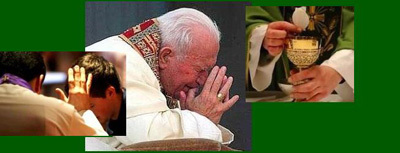
I write this article as a pause from the great sorrow of scandal which
has wounded the Church, in order to bring to mind… the spiritual beauty
of fatherhood present in our priests.
It was the year 2000, and I was privileged to attend Easter Vigil Mass
in Rome during the Jubilee Year. The solemnity and exquisite beauty of
the outside Mass, that spring evening, was unearthly. The liturgy began
in darkness. In front of the obelisk in St. Peter’s Square, a huge fire
was lit. Amidst the throng of tens of thousands, not a word was spoken
as the chanted Easter sequence wafted above the crowd, intermingling
with incense and the smoke of the newly sanctified fire. Pope John Paul
II turned, and began the journey toward St. Peter’s, accompanied by an
endless procession of prelates of every nationality. Amazingly, no one
even dared take a photograph, so holy was the moment felt by all.
The Vertex of Love
The Vertex of Love | by Jonathan Fleischmann | Homiletic & Pastoral Review
When Mary was predestined in one and the same decree with Jesus Christ by the design of God—before the creation of angels or the universe, and before the existence of sin or evil—she was predestined to be the Spouse of the Holy Spirit … to hold within herself all the love of creation.
Love’s Mechanics
In the return of all created things to God the Father (cf. Jn
1, 1; 16, 28), “the equal and contrary reaction,” says St. Maximilian
Kolbe, “proceeds inversely from that of creation.” In creation, the
saint goes on to say, the action of God “proceeds from the Father
through the Son and the Spirit, while in the return, by means of the
Spirit, the Son becomes incarnate in (the Virgin Mary’s) womb and
through Him, love returns to the Father.” 1 The Saint of Auschwitz goes on:
In the union of the Holy Spirit with her, not only does
love bind these two beings, but the first of them (the Holy Spirit) is
all the love of the Most Holy Trinity, while the second (the Blessed
Virgin Mary) is all the love of creation, and thus in that union heaven
is joined to earth, the whole heaven with the whole earth, the whole of
Uncreated Love with the whole of created love: this is the vertex of love. 2
Love’s Equilibrium
The form of the diagram shown in Figure 1 is not found in the
work of St. Maximilian. However, it accurately represents the state of
equal and opposite action and reaction, that occurs when two bodies make
contact. In this case, the “bodies” represent heaven and earth: the
uncreated and created orders, God and his creation. The first point I
would like to make is that the state of equal and opposite contact
forces in Newtonian mechanics requires “force equilibrium.” It may then
seem very wrong to use an image like this one, because how can the
state shown between God and his creation be in equilibrium? Isn’t God’s
act of love so much greater than the return of his creation that no
“equilibrium” would be possible? This would certainly be the case if it
were not for Emmanuel, that is, God with us. Jesus, who is
truly man, and truly God, belongs to both the created and uncreated
orders simultaneously. In his person, Jesus is both the son of Mary,
fully human and like us in all ways except sin, and the Eternal Son of
God the Father, infinite and equal in all ways to the Triune God.
October 9, 2012
The Tale of Two Religions

The Tale of Two Religions | Michael Coren | Catholic World Report
The West abuses Catholicism but remains too intimidated to stand firm against Islamic extremism.
In
late September I went along to what was described as an “anti-blasphemy” rally
in the middle of Toronto. It was in response to the notorious “Innocence of
Muslims” movie trailer, which was shown on YouTube but watched by very few of
the Muslim fanatics who murdered people, destroyed property, and generally fell
into paroxysms of theocratic angst as a result. The demonstration took place
opposite the US Consulate, and most of the manic yells consisted of condemnations
of the United States and Israel, with one genius holding a large poster
announcing, “Islam Condones Racism.” Actually it does, and Islamic societies
are often grotesquely racist, but he had intended to say “Islam Condemns
Racism.” I considered correcting him, but it was much more fun not to, and he’d
probably have only said that language was part of a Zionist or Christian
conspiracy.
As
I was there with a film crew and covering it for my television show, there was
a certain, if limited, safety. Nevertheless, I was barged, abused, and
threatened. I spoke to dozens of the perhaps 2,000 people who were there. They
called for laws protecting Islam from offense, wanted to arrest people who
insulted Muslims, and screamed for the death penalty for the man who made the
film. They denied that there was such a thing as a blasphemy law in Pakistan,
claimed that no Muslim had ever said anything ill about a Christian or
persecuted Christians, and generally displayed an invincible ignorance and
malice. The brother of Omar Khadr was there. Khadr is the terrorist who killed
an American medic in Afghanistan, and was then imprisoned in Guantanamo Bay. As
he was born in Canada, Islamic and leftist activists were demanding he be
brought back. His brother told me that he was proud of his sibling, who had
done nothing wrong, and that he was a good Muslim. There were endless cries of
Islamic triumphalism, anti-Semitism, and calls for violence.
Oddly
enough, little of this was reported in the mainstream media in Canada, when there
is ample evidence on film of what happened.
October 8, 2012
About those two new Doctors of the Church...
From Pope Benedict XVI's homily yesterday, given during the Mass, in St. Peter's Square, that opened the XIII Ordinary General
Assembly of the Synod of Bishops on the New Evangelisation:
At various times in history, divine providence has given birth to a
renewed dynamism in Church’s evangelizing activity. We need only think
of the evangelization of the Anglo-Saxon peoples or the Slavs, or the
transmission of the faith on the continent of America, or the missionary
undertakings among the peoples of Africa, Asia and Oceania. It is
against this dynamic background that I like to look at the two radiant
figures that I have just proclaimed Doctors of the Church, Saint 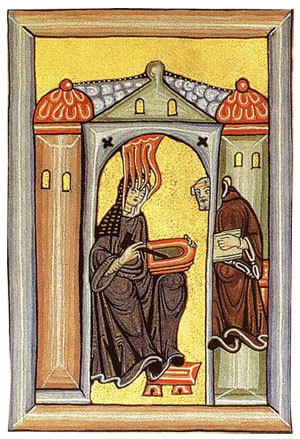 John of
John of
Avila and Saint Hildegard of Bingen. Even in our own times, the Holy
Spirit has nurtured in the Church a new effort to announce the Good
News, a pastoral and spiritual dynamism which found a more universal
expression and its most authoritative impulse in the Second Vatican
Ecumenical Council. Such renewed evangelical dynamism produces a
beneficent influence on the two specific “branches” developed by it,
that is, on the one hand the Missio ad Gentes or announcement of the
Gospel to those who do not yet know Jesus Christ and his message of
salvation, and on the other the New Evangelization, directed principally
at those who, though baptized, have drifted away from the Church and
live without reference to the Christian life. ...
At this point, let us pause for a moment to appreciate the two saints
who today have been added to the elect number of Doctors of the Church.
Saint John of Avila lived in the sixteenth century. A profound expert on
the sacred Scriptures, he was gifted with an ardent missionary spirit.
He knew how to penetrate in a uniquely profound way the mysteries of the
redemption worked by Christ for humanity. A man of God, he united
constant prayer to apostolic action. He dedicated himself to preaching
and to the more frequent practice of the sacraments, concentrating his
commitment on improving the formation of candidates for the priesthood,
of religious and of lay people, with a view to a fruitful reform of the
Church.Saint Hildegard of Bingen, an important female figure of the
twelfth century, offered her precious contribution to the growth of the
Church of her time, employing the gifts received from God and showing
herself to be a woman of brilliant intelligence, deep sensitivity and
recognized spiritual authority. The Lord granted her a prophetic spirit
and fervent capacity to discern the signs of the times. Hildegard
nurtured an evident love of creation, and was learned in medicine,
poetry and music. Above all, she maintained a great and faithful love
for Christ and the Church.
Read the entire homily. Also see some of Benedict's remarks on St. Hildegard, given in in September 2010.
Medievalist Sandra Miesel, in her CWR essay, "Hildegard of Bingen: Voice of the Living Light" (Jan. 25, 2012), remarked upon the visions of the great German mystic:
Nothing would have seemed extraordinary about Hildegard for
the first half of her long life. She did not wish to publicize the visionary
experiences she had been having since the age of three when a blaze of dazzling
brightness burst into her sight. A diffuse radiance which she called her visio filled her field of vision for the rest of her life
without interfering with ordinary sight. Hildegard came to understand this
phenomenon as “the reflection of the living Light” which conferred the gift of
prophecy and gave her an intuitive knowledge of the Divine.
Hildegard’s visions were not apparitions or dreams. She
scarcely ever fell into ecstasy but rather perceived sights and messages with
the “inner” eyes and ears of her soul. She dictated what she “saw” and “heard”
to secretaries while fully lucid. Because the astonishing images she described
and directed artists to illustrate feature sparkling gems, shimmering orbs,
pulsating stars, curious towers and crenellated walls, modern psychologists
have suggested that Hildegard suffered from a form of migraine called
“scintillating scotomata.” The debilitating illnesses that preceded or
accompanied her visionary episodes might have been migraine attacks. Because
supernatural communications are received according to the capacity of the
receiver, neurology can offer insights on Hildegard’s particular repertory of
forms. But it cannot explain away her experiences or the religious meanings she
assigns to them. These were genuine occasions of contact between Hildegard and
God.
And Dr. Christopher Morrissey penned, "A Beginner’s Guide to the Music of St. Hildegard of Bingen" (June 25, 2012):
It
will cost you somewhat
more to download Hildegard’s entire musical output from iTunes. But if
you wish, you can start your downloading project with only a few selections
taken from the Sequentia treasure
chest. After all, unless you have the musical skills of a Mozart, being deluged
with St. Hildegard’s lifetime musical achievement will probably be overwhelming
for you. So why not start with a playlist of 12 of her best?
Allow
me to give you that recommended playlist, below. I will list 12 downloads for
which you need only pay about $0.99 each. This custom playlist introduction is
the best way I can think of to get you started, short of recommending one of
the “desert island” albums that I already mentioned above.
And
this playlist is not just for beginners. This is my own custom “Hildegard highlights”
iPhone playlist, and it probably resembles the playlists on the iPhones of
other advanced chant enthusiasts.
By
the way, if you ever do move from a beginning to an advanced comprehension of
Hildegard’s entire musical corpus, you will want to compare the different
recorded versions of every single one of her works. Thanks to the Internet, this
task has never been easier, as an exhaustive and well-ordered discography
of every recording of Hildegard’s music is available.
The 2004 Homiletic & Pastoral Review article, "Saint John of Avila and the Reform of the Priesthood" by Sr. Joan Gormley is a helpful introduction to this great reformer:
St. John of Avila was a parish priest and theologian in 16th
century Spain who exercised some influence over ideas
concerning 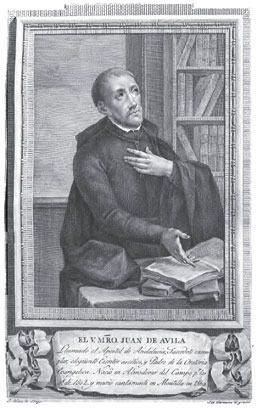 the reform of priestly reformation at the Council of Trent.
the reform of priestly reformation at the Council of Trent.
Avila linked the priesthood closely to the Eucharist and regarded
holiness as the preeminent quality of a priest, who must serve as a
mediator between God and man. To this end, he recommended painstaking
selection of candidates followed by rigorous spiritual and intellectual
formation within a community. For Avila, renewal of the priesthood
demanded the priest's conformity to Christ as both Good Shepherd and
High Priest.
Sixteenth century Spain was a golden age of
sanctity during
which a veritable procession of saints appeared on the scene before
and after the Council of Trent and contributed in a multitude of ways to
the reform and renewal of the Church. We might mention, for example,
such saints as Ignatius of Loyola, Peter of Alcantara, Teresa of Avila,
Francis Borgia, and John of God. All of these saints were religious who
renewed the life of the Church by founding or reforming communities
that became renowned for holiness of life and apostolic zeal. Less often
noticed, but definitely a participant in the procession of sixteenth
century Spanish saints is St. John of Avila,[1] a diocesan priest who
labored as a preacher, confessor, spiritual director, catechist,
evangelizer, educator, and theologian and knew and helped each and all
of the saints mentioned above.
Venerated in Spain as the patron
of
diocesan priests, John Avila was a major figure in the reform of the
life and ministry of parish priests who, as shepherds of Christ's
faithful, have direct influence on the holiness of the Church. His
teaching on the priesthood and its renewal continues to be illuminating
for
the Church, especially in the contemporary situation in which profound
questions have been raised about priestly life and ministry. Avila was
profoundly convinced of the holiness of the priestly state and of the
holiness of life required of each and every priest. He considered the
very
holiness of the Church and its members to depend on the careful
selection and formation of candidates for the priesthood so that they
might be
holy and exercise their office of sanctifying others.
Introduction to St. John of Avila
John
of Avila was born on the
feast of the Epiphany in 1499 in Extremadura in the ecclesiastical
province of Toledo, the only child of his parents. [2] He spent four
years at the University of Salamanca studying law (1513-1517), and then
returned to his parents' home where he lived in seclusion for several
years. On the advice of a Franciscan priest, the young man left his
solitude and matriculated at the University of Alcala, an important
center
for humanistic studies in Spain, where he studied from 1520-1526. After
ordination to the priesthood in 1526, Avila went to Seville to prepare
for departure as a missionary to the new world. While waiting to set
sail, the newly ordained priest engaged in catechesis and preaching, so
impressing the priest with whom he lived and worked, Father Fernando
Contreras, that he urged the Archbishop of Seville to keep Avila in
Spain,
where an enormous mission field had opened up with the end of Muslim
domination. Thus, John Avila began the missionary work in Southern Spain
that would earn him the title, "Apostle of Andalusia."
Read the entire piece on IgnatiusInsight.com.
September 29, 2012
Demons, Sin, Death, and Damnation
A Scriptural Reflection on the Readings for September 30, 2012 | Carl E. Olson
Readings:
• Num 11:25-29
• Ps 19:8, 10, 12-13, 14
• Jas 5:1-6
• Mk 9:38-43, 45, 47-48
What do demons, sin, death,
and damnation have in common? An obvious (and correct) answer is that all of
them are, put bluntly, bad. They have a certain, even close, relationship to
one another. Another answer is that each is a topic usually avoided in
conversations around the water cooler and over morning coffee. In fact, they
are sometimes given short shrift in homilies and sermons.
But today’s Gospel
prominently mentions all four. Needless to say, it is a challenging and
difficult reading. Yet it is the sort of passage too often ignored or
downplayed, resulting in a skewed understanding of both the mission and message
of Christ.
Jesus and his disciples took
the existence of demons for granted; they also took them seriously. The
discussion in Mark 9 about driving out demons is just one of about seventy
references to demons in the New Testament. What is unusual, however, is the context:
the disciples were complaining because someone who “does not follow us,” they
told Jesus, was performing exorcisms. Jesus reminds them that such a deed can
only be performed in his name,
and such faith could not come from a foe. Since men can only be for or against
him, the benefit of any doubt should go to those who exhibit love for and faith
in Christ. In the words of St. Gregory of Nyssa, “None of those seeking to be
saved will be lacking in this ability,” since salvation is a free gift from
God.
That expansive explanation
of how good done in the name of Christ should be acknowledged is followed by
some of the strongest language in the Gospels about avoiding sin. Two terms
stand out: scandal and Gehenna. “If your hand causes you to sin”—literally, scandalizes
you, “cut it off.” Scandal, the Catechism explains, “is an attitude or behavior which leads
another to do evil.” Those who give scandal by words or actions can destroy
spiritual life. “Scandal is a grave offense if by deed or omission another is
deliberately led into a grave offense” (par. 2284). It is, G. K. Chesterton
summarized nicely, “the tripping up of somebody else when he is trying to be
good.”
Momentary physical pain
cannot be compared to the eternal spiritual torment awaiting those who continue
unrepentant in their sins. Gehenna symbolized such torment. It was a steep
ravine southwest of Jerusalem where, many centuries before Christ, some
Israelites had sacrificed “their sons and daughters to Molech” (Jer. 32:35), a
pagan god long associated with such horrors. Gehenna was desecrated eventually
by the righteous King Josiah (2 Kngs. 23:10), and became a smoldering garbage
dump filled with trash and animal carcasses. Needless to say, it offered a
powerful image of an eternal hell filled with undying worms and unquenchable
fire.
Speaking of hell is never
fashionable or enjoyable. St. John Chrysostom said of this passage: “Ordained
as we have been to the ministry of the word, we must cause our hearers
discomfort when it is necessary for them to hear. We do this not arbitrarily
but under command.”
One of the great sins of our
time is the deliberate and self-serving destruction of human life, especially
what Pope John Paul II described as “the scandal of abortion.” Such a grave
scandal exists because men—even those living in Western democracies—have “lost
the ability to make decisions aimed at the common good” (Centesimus annus, 47). Pope Benedict XVI, in his recent encyclical on
social doctrine, wrote, “To desire the common good and strive towards it is a requirement of justice
and charity” (Caritas in veritate, 7).
Justice requires every man
be held responsible for his sins; it rightly asks each pay for his moral
deficits. Yet we are unable. As today’s reading from the Epistle of James makes
clear, wealth cannot save us. Nor can power or fame. Salvation from demons,
sin, death, and damnation is found only in the name of Jesus Christ, the author
of life (Acts 3:15).
(This "Opening the Word" column originally appeared in the September 27, 2009, edition of Our Sunday Visitor newspaper.)
"Twelve things to know about angels" by Peter Kreeft
As today is the Feast of of Saints Michael, Gabriel, and Raphael,
archangels, here is a popular post years I am "recycling"
for those who missed it before. It is an excerpt from
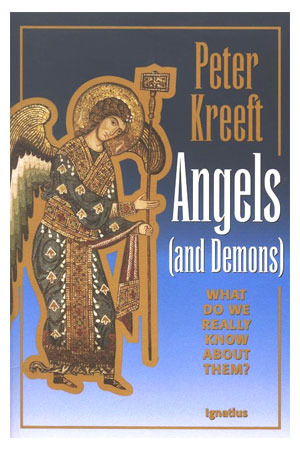 Angels (and Demons): What Do We Really About Them? (Ignatius Press; 2004, sixth printing) by Peter Kreeft:
Angels (and Demons): What Do We Really About Them? (Ignatius Press; 2004, sixth printing) by Peter Kreeft:
The Twelve Most Important Things to Know About Them
1.
They really exist. Not just in our minds, or our myths, or our
symbols, or our culture. They are as real as your dog, or your sister,
or electricity.
2. They’re present, right here, right now, right next to you, reading these words with you.
3. They’re not cute, cuddly, comfortable, chummy, or “cool”. They are fearsome and formidable. They are huge. They are warriors.
4.
They are the real “extra-terrestrials”, the real “Super-men”, the
ultimate aliens. Their powers are far beyond those of all fictional
creatures.
5. They are more brilliant minds than Einstein.
6. They can literally move the heavens and the earth if God permits them.
7.
There are also evil angels, fallen angels, demons, or devils. These
too are not myths. Demon possessions, and exorcisms, are real.
8.
Angels are aware of you, even though you can’t usually see or hear
them. But you can communicate with them. You can talk to them without
even speaking.
9. You really do have your very own “guardian angel”. Everybody does.
10.
Angels often come disguised. “Do not neglect hospitality, for some
have entertained angels unawares”—that’s a warning from life’s oldest
and best instruction manual.
11. We are on a protected part of a great battlefield between angels and devils, extending to eternity.
12.
Angels are sentinels standing at the crossroads where life meets
death. They work especially at moments of crisis, at the brink of
disaster—for bodies, for souls, and for nations.
Why do people think it's stupid to believe in angels?
One
reason is a mistake about themselves: the failure to distinguish
between (1) sense perception or imagination (which is a kind of inner
sensing) and (2) reason, or intelligence, or understanding. We don't see
pure spirits, and we can't imagine them. That doesn't mean we can't
know or understand them. We can see and imagine the difference between a
five-sided figure (a pentagon) and a six-sided figure (a hexagon), and
we can also intellectually understand that difference. We cannot,
however, sense or imagine the difference between a 105-sided figure and a
106-sided figure. Both look to us simply like circles. But we can
understand the difference and even measure it exactly. So we can
understand some things we can't see. We can't see qualities like good
and evil either. What color or shape or size is evil? Yet we can
understand them. We can imagine our brains, but not our minds, our
personalities. But we can know them.
Many who deny angels deny or
are uaware of the spiritual half of themselves. Angels are a
touchstone of "know thyself". So are animals.
Aren't angels irrelevant today? This is the age of man, isn't it?
Yes,
this is the age of man, of self-consciousness, of psychology. And
therefore it is crucial to "know thyself" accurately today. The major
heresies of our day are not about God but about man.
The two most
destructive of these heresies—and the two most popular—are angelism,
confusing man with an angel by denying his likeness to animals, and
animalism, confusing man with an animal by denying his likeness to
angels.
Man is the only being that is both angel and animal, both
spirit and body. He is the lowest spirit and the highest body, the
stupidest angel and the smartest animal, the low point of the hierarchy
of minds and the high point of the hierarchy of bodies.
More
accurately stated, man is not both angel and animal because he is
neither angel nor animal; he is between angels and animals, a unique
rung on the cosmic ladder.
But whichever way you say it, man must
know angels to know himself, just as he must know animals to know
himself, for he must know what he is, and he must know what he is not.
A free 80-minute lecture,"Aquinas and the Angels," by Peter Kreeft can be accessed here.
September 28, 2012
CWR Interview with T. M. Doran, author of "Terrapin: A Mystery"
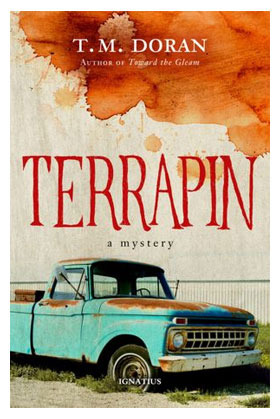 Terrapin: A Mystery
Terrapin: A Mystery
(Ignatius Press, 2012; also in electronic book format) is the new, and second, novel by T. M. Doran, who is a
writer, consultant, and adjunct professor of civil engineering at Lawrence
Technological University. His first novel was Toward the Gleam (electronic book format and audio book download)
published last year by Ignatius Press. He spoke recently with Catholic World
Report about Terrapin, literary and intellectual influences, and the craft
and process of writing fiction.
CWR: Your background
is in civil engineering and education. Was writing fiction something you worked
at from an early age, or did you come to it later? And how?
Doran: I have been writing
fiction since I was a young boy. A friend and I traded sci-fi short stories
that we composed ourselves when we were about ten years old. I've always loved
to read, and writing came naturally to me, though I work harder at it now. I
can hardly remember a time when I wasn't working on a story. Cole Porter
Palmer, who is a character in the stories composed by Dennis Cole in Terrapin,
was conceived over a decade ago.
CWR: Who are some of the authors and
thinkers who have influenced you the most?
Doran: As to literature, Evelyn
Waugh, Flannery O'Connor, J.R.R. Tolkien, and T.S. Eliot, writers and poets who
wrote from a Catholic perspective rather than writing explicitly Catholic
novels. I read a variety of writers: Jane Austen, Dostoevsky, Patrick O'Brian,
Thornton Wilder, Oscar Wilde, Dickens, Richard Adams, and I have learned
something about the craft of writing from every one of them. I enjoy mystery
stories, especially the golden age puzzle-plot stories from the 1920s through
the 1940s. Some of my favorite mystery authors are G.K. Chesterton, Agatha
Christie, J.D. Carr (the locked room master), Rex Stout, and the early Ellery
Queen mysteries that featured pure "ratiocination". I enjoy P.D.
James, who is still writing.
I have been an avid reader of history and biography for decades, which helped
immensely when I was composing Toward the Gleam
Thinkers who have influenced me include Blessed John Paul II (especially
"Faith and Reason" and "The Splendor of the Truth"), Edith
Stein (her journey from phenomenology to the convent), Kurt Goedel (his ideas
about time and space), G.K. Chesterton, C.S. Lewis and Frank Sheed (their
accessible apologetics), Blaise Pascal (reason in the light of faith), William
F. Buckley (conservatism based on first principles and natural law), and
Augustine and Aquinas (a little at a time). I have a four-volume Encyclopedia
of Philosophy on my bookshelf, to which I
refer quite often. I've always had a fascination with competing ideas.
CWR: Both of your novels can be described, at least generally, as
works of “mystery”. What are some of the difference between Toward the Gleam and your new novel, Terrapin?
Continue reading on the CWR site.
Carl E. Olson's Blog
- Carl E. Olson's profile
- 20 followers


